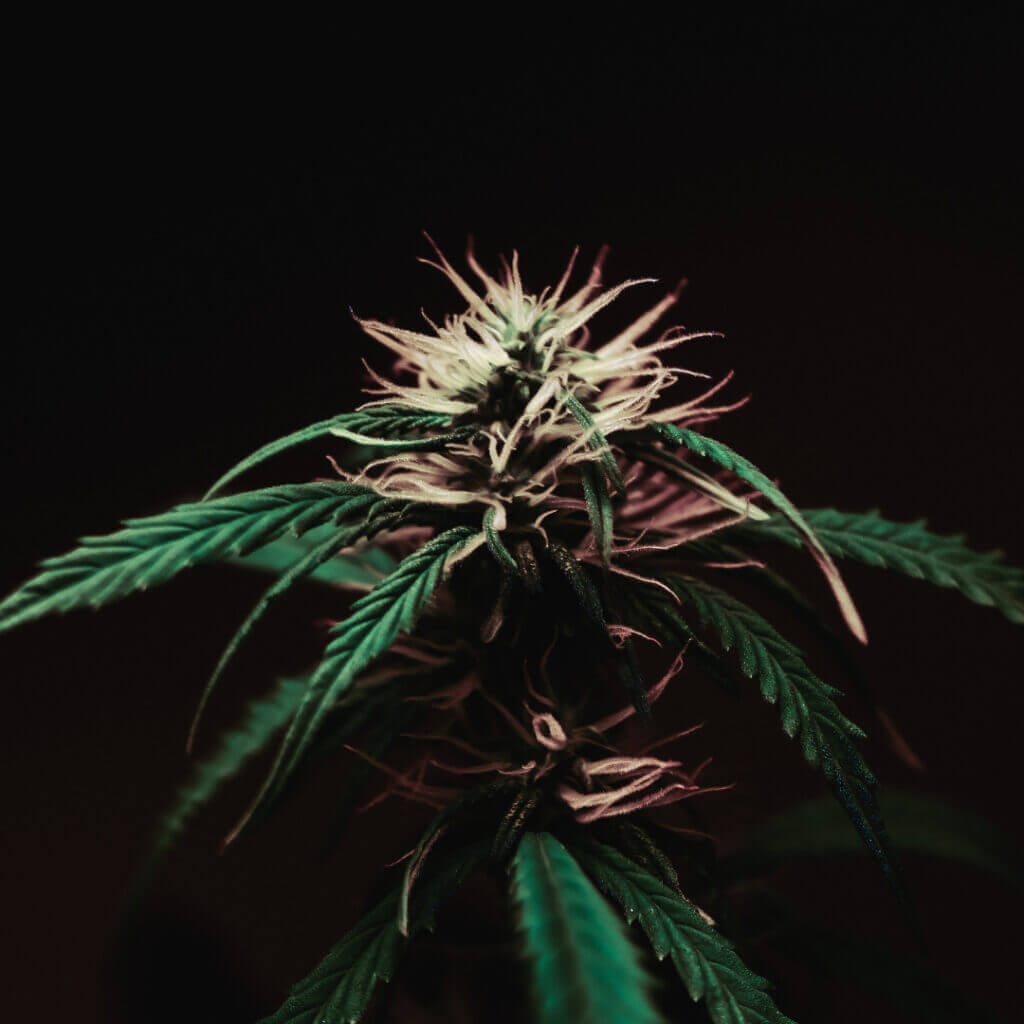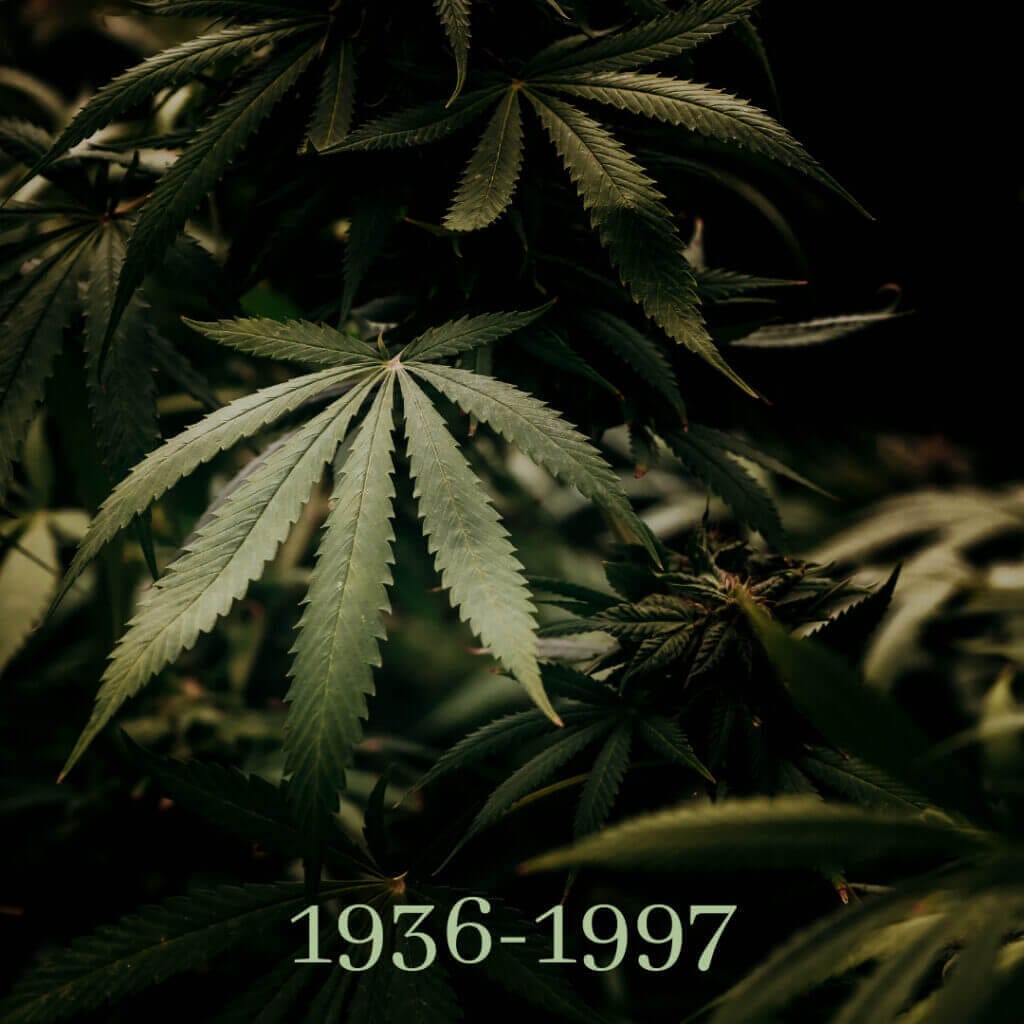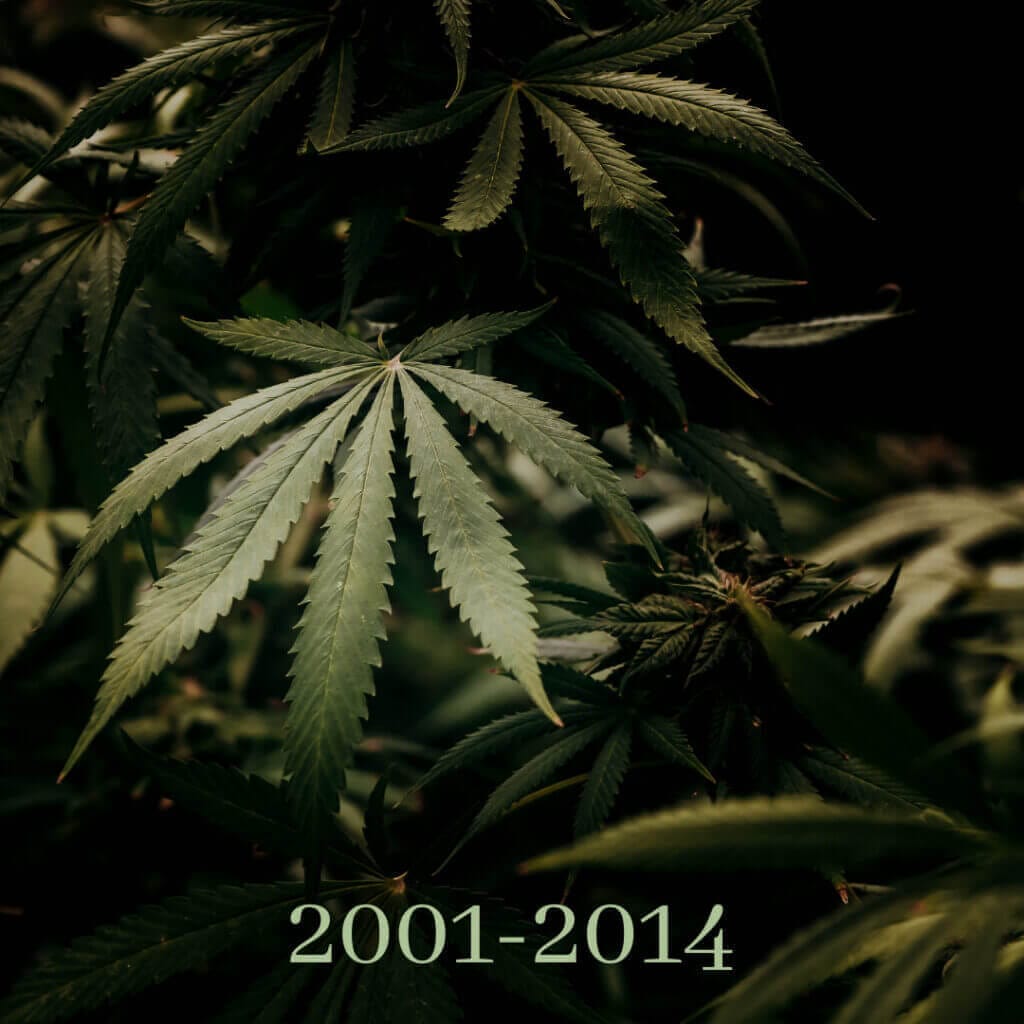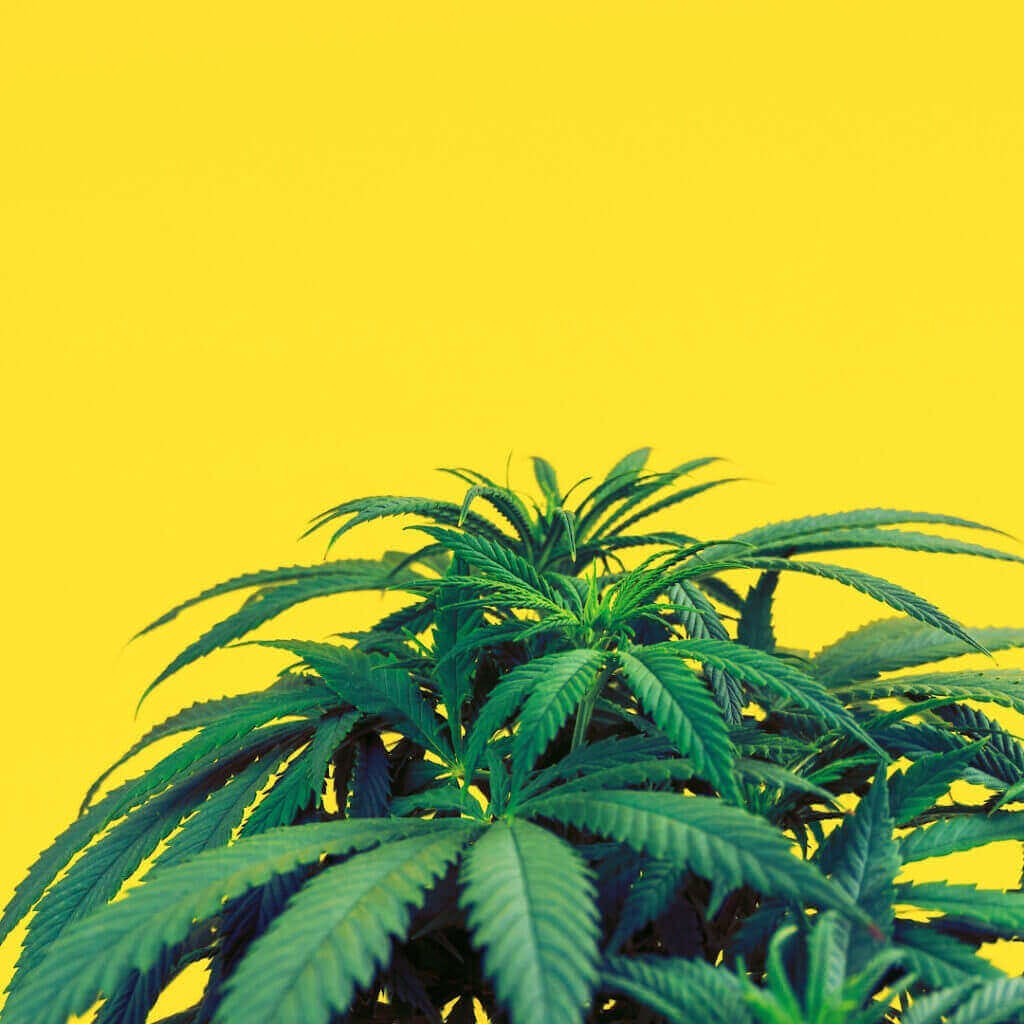
The Enchanting World of Lavender in Skincare
Lavender, with its delicate purple flowers and soothing fragrance, has been a beloved ingredient in skincare for centuries. This versatile
Cannabis prohibition was rooted in the tyranny, evil, and greed of a young corrupt federal government. So, what’s their excuse today? For thousands of years, cannabis coexisted peacefully with society. It wasn’t until the early 1900s that things took a turn for the worse for this plant. Today we are just beginning to re-learn about the many therapeutic potentials and medicinal qualities cannabis offers. We’re also learning about the endless residential, commercial, and industrial applications of cannabis.
Cannabis plants produce two primary varieties. One is known as Industrial Hemp. This particular variety of cannabis has virtually no THC but is rich in other cannabinoids, vitamins, minerals, and amino acids. It grows very tall and has extremely long and strong fibers. These fibers can be processed into all kinds of things. For hundreds of years, industrial hemp was used to produce fabric for clothing. It was also used on sailing ships. The rigging and sails of the vessels were made from hemp.
The other variety of cannabis is the one most people are familiar with. It is often referred to as medical or recreational cannabis. This variety of cannabis has high levels of THC, unlike Industrial Hemp. Medical or recreational cannabis, just like Industrial Hemp, is loaded with a broad spectrum of cannabinoids and is rich in vitamins, minerals, and amino acids. For thousands of years, cannabis was utilized for food, clothing, and medicine.
Things were going pretty good for cannabis. Someone was allowed to have it in their possession and did not face the fear of prison time or excessive fines. Suddenly approaching the early 1900s, when the birth of today’s dysfunctional political body was coming into fruition, cannabis found itself in a vicarious position.
Cannabis eventually becomes illegal on state and federal levels across the country and in many places worldwide. Hemp was just the same as “marihuana” to this greedy new power. Families were destroyed, lives ruined, and profit was made by a greedy, corrupt ill-informed government. This still happens today! I say greedy, corrupt, and ill-informed government because the foundation for cannabis prohibition is one built upon a bed of lies and political racism. The ending of the Civil War and the loss of slavery prompted many people in the southern part of the United States to look for a new option for cheap or free labor. They found it with America’s prison systems.
“This option was found when the federal government began leasing convicts to plantation owners. The program worked so well that prisons needed to fill faster to meet the demands. “After the Civil War, slavery persisted in the form of convict leasing, a system in which Southern states leased prisoners to private railways, mines, and large plantations. While states profited, prisoners, earned no pay and faced inhumane, dangerous, and often deadly work conditions.”-Equal Justice Initiative

The 1900s saw the American Federal Government start to show their true colors when they attempted to control people with alcohol and cannabis prohibition. These federal government initiatives would become a great way to help fill prisons and make a profit by leasing them for labor. The state just had to arrest and prosecute people, and the feeding, housing, and such were handled by whoever leased the convicts.
Cannabis prohibition as we know it was conceived, and continues to this very day, by the United States Federal Government. Meanwhile, opioid, tobacco, and alcohol addiction/abuse were pushed to all-time highs by these same greedy individuals.
“For 5 millennia, Cannabis sativa has been used throughout the world medically, recreationally, and spiritually. From the mid-19th century to the 1930s, American physicians prescribed it for a plethora of indications, until the federal government started imposing restrictions on its use, culminating in 1970 with the US Congress classifying it as a Schedule I substance, illegal, and without medical value. Simultaneous with this prohibition, marijuana became the United States’ most widely used illicit recreational drug, a substance generally regarded as pleasurable and relaxing without the addictive dangers of opioids or stimulants.”-NCBI

The very first form of prohibition in the United States was actually alcohol prohibition. The United States federal government enacted a nationwide constitutional ban on the transportation, importation, sales, and production of alcoholic beverages. Alcohol prohibition lasted from 1920 to 1933. Upon the realization that alcohol prohibition was not going to work, the United States federal government gave birth to cannabis prohibition.
The grounds for alcohol prohibition were built on the temperance movement, a religious ideal of godliness and purity. Alcohol prohibition wasn’t a total failure for the federal government. They learned a few things. The next time they attempted prohibition, they wouldn’t make the same mistakes. Alcohol prohibition ended in 1933, and cannabis prohibition was born in 1937, just four years later.
America was still recuperating from the Civil War, one of the deadliest and most destructive wars in our history. With western religion influencing our country at an all-time high, the American federal government decided to enact the 1937 MJ Tax Act and wage an all-out war on cannabis. Harry J. Anslinger was the director of the Federal Bureau of Narcotics and Controlled Substances. He waged war on cannabis and anyone he didn’t like in the way.
He particularly had it out Mexicans and Africans. The fire of cannabis prohibition was fueled by remarks from Harry J. Anslinger, such as the following.
These statements are lies. However, these lies were the building blocks of marijuana prohibition. They led to the United States federal government producing an anti-cannabis propaganda film called “Reefer Madness” in 1936. This film was the groundwork for the MJ Tax Act of 1937.
In the United States of America, cannabis prohibition by the federal government officially kicked off in October of 1937. But, some states in America had already outlawed or banned cannabis. Massachusetts was the first state in America to do this. From 1937 until the current day, Americans have voiced their dislike of cannabis prohibition. This issue has been tackled by many professionals only to be blindly ignored by fat cat bureaucrats. There is substantial research to support cannabis as a medicine. Sadly this science means nothing in comparison to big paychecks from lobbying industries.
If our elected political representatives of this country were to wear sponsor suits like NASCAR drivers, we would see pharmaceutical, alcohol, tobacco, fashion, and private prison industry names plastered all over them. These industries have lobbied our political leaders for decades, keeping cannabis from people for one reason or another. No matter how you look at it, it all boils down to profit and control.
Let’s take a look at a timeline of events from 1936 to current. This isn’t a detailed timeline of everything that has happened but gives you a great idea about the struggle, trials, and tribulations of cannabis prohibition and legalization.

1936- The United States federal government released the anti-marijuana propaganda film titled ” Reefer Madness.”
1937 – The Marijuana Tax Act was passed by the 75th Congress. While this act did not make cannabis completely illegal, it restricted access for physicians to the point that it ended the medical use of cannabis that had been so popular over the last 100+ years.
1940- Roger Adams and a team of researchers from the University of Illinois were the first to identify and synthesize CBD. Mr. Adams was also the first to identify THC though the credit for this discovery often goes to Dr. Raphael Mechoulam.
1941- Cannabis was officially removed from the US Pharmacopeia.
1942- Marijuana prohibition was in full swing. However, American farmers were urged to grow hemp for the war effort, as seen in the 1942 film “Hemp for Victory.”
From this point in time up until 1970, the United States passed several amendments and acts which would further impede upon anyone looking to partake or utilize cannabis in any way. The United States Federal government passed The Durham-Humphrey Amendment in 1951, The Manufacturing Act in 1960, the Kefauver-Harris Drug Amendments in 1962. These laws restricted the use of cannabis and other drugs by increasing penalties and enforcing requirements such as requiring proof of effectiveness for FDA approval.
1970- The campaign to eradicate cannabis was in full swing. President of the time, Richard Nixon, would sign what is known as the Comprehensive Drug Abuse and Prevention and Control Act of 1970 more popularly known as the Controlled Substance Act. Six years would go by while people were arrested and incarcerated over cannabis before the slightest victory for the people and the plant would be seen.
1972- The former Governor of Pennsylvania, Raymond P. Shafer, released a report on cannabis that was commissioned by Nixon. Nixon expected support towards continuing cannabis prohibition from Mr. Shafer but was outraged to learn that his political colleague supported the decriminalization of cannabis possession in the United States. Mr. Shafer presented Congress a report on March 22nd of 1972 called “Marihuana, a Signal of Misunderstanding“ that supported ending Federal cannabis prohibition. But we all know how that turned out. Just like the federal government didn’t listen to the LaGuardia Committee Reports on Marijuana in 1944, they didn’t listen to Mr. Shafer in 1972.
1976- This was a monumental year for cannabis advocates, patients, and supporters. This would be the first time the federal government would lose a case against an American citizen involving cannabis. Robert Randall defended himself against charges of cannabis cultivation using a little-known common law, Doctrine of Necessity, citing glaucoma as the condition being treated. United States Federal Judge James Washington decided in favor of Robert Randall, constituting his cultivation of cannabis as a medical necessity.
1978- As a result of federal judge James Washington’s ruling in favor of Robert Randall, a program for patients to receive cannabis from the federal government was born. Patients would get their medical cannabis from a local pharmacy that was properly licensed for filling prescriptions for schedule 1 drugs. The Cannabis received by patients was cultivated unfortunately at the University of Mississippi, which today is known for producing some of the lowest quality cannabis on the planet. The Compassionate Use IND program at one time served 14 Americans and provided a monthly allotment of pre-rolled cannabis joints to each of them. The program stopped accepting new applications in 1992, and by 2011, there were only four remaining patients in the program.
1981- Cannabis is still classified as a schedule 1 substance under the Controlled Substances Act and is considered to have no medicinal value and an extremely high potential for addiction and or abuse, according to the United States Federal government. However, that doesn’t stop them from selling the patent for Marinol, which is a synthetic lab-created attempt to replicate cannabis that produces very poor results.
1988- This looked like it was finally going to be the year for cannabis. A DEA administrative law judge by the name of Francis Young listened to testimony on cannabis that came from reviewing hundreds of official government documents over 15 days. Francis young concluded, “marijuana is one of the safest therapeutically active substances known to man” and recommended its rescheduling.
1989- The director of the DEA, John Lawn, decided to ignore the recommendation of Judge Francis Young and ordered cannabis to remain a schedule 1 narcotic with no medical use.
1991- The AIDS epidemic was here. The government program allowing for prescriptions of medical marijuana was suspended because of a surge in applications brought on by the AIDS epidemic. This era also brought about one of the most renowned cannabis activists, a woman known by many as Brownie Mary. This exceptional human being didn’t care what the government thought or about the trouble she may face (and did on multiple occasions); she treated hundreds of HIV patients bringing relief to them through cannabis-infused brownies!
1996- George Bush, Jimmy Carter, and Gerald Ford openly stated their opposition to cannabis legalization opposing Proposition 215 in California and Proposition 200 in Arizona. Mr. “I tried it once but I didn’t inhale,” Slick Willy, AKA William Clinton supported his fellow presidents by announcing a plan to impose criminal prosecution on any physician prescribing or recommending cannabis in Arizona or California.
1996- In a show of support showing the American people were tired of the lies being spewed from our political representatives, the message from Jimmy Carter, Gerald Ford, and George Bush opposing cannabis legalization in California and Arizona fell upon deaf ears. Voters in the state of California approved Proposition 215 by a margin of 56 to 44, making California the first state in America to legalize a medicinal cannabis program. More states would follow California’s path in the coming years.
1997- A spokesman for the White House, Mike McCurry, spews lies from his mouth regarding cannabis saying, “we’re always open to factual information.” He was clear to point out that the current Administration opposed the use of cannabis in treating anyone who was sick even though the National Institute of Health (NIH) produced findings proving otherwise.

2001- The United States Drug Enforcement Agency refuses to reschedule cannabis allowing for medical use after receiving a petition by John Gettman. The DEA’s reasoning for denying this petition was, “the evidence overwhelmingly leads to the conclusion that marijuana has a high potential for abuse.” This year also saw the Oakland Cannabis Buyers Cooperative and the United States square off in the United States Supreme Court ruling, “There is no medical necessity exception to the controlled substance acts prohibition on manufacturing and distributing marijuana.” 2001 was also the year that the US Department of Health and human services finally got around to reviewing information forward to them in 1997 by the DEA regarding the petition by John Gettman and High Times Magazine to reschedule cannabis. Of course, it was denied again on the grounds that “current scientific and medical evidence demonstrates that marijuana continues to meet all three statutory criteria for placement in schedule 1.”
2004- The United States federal government ill-informed, racist, and greed-driven viewpoint towards cannabis is still supported fully and expressed by the director of The White House Office of National Drug Control Policy, John P Walters. Mr. Walters was quoted saying;
“In fact, smoked marijuana, a schedule 1 controlled substance schedule 1 is the government’s most restrictive category, has no medical value and a high risk of abuse. The food and Drug Administration notes that marijuana has not been approved for any indication, that scientific studies do not support claims of marijuana’s usefulness as a medication, and that there is a lack of accepted safety standards for the use of smoked marijuana. The truth is, there are laws against marijuana because marijuana is harmful. With every year that passes, medical research discovers greater dangers from smoking it, from links to serious mental illness to the risk of cancer, and even dangers from in utero exposure.”
2005- The lies continue from the United States federal government with the director of The White House Office of National Drug Control Policy, John Walters commenting on the US Supreme Court’s ruling of 6-3 against medical cannabis in the case of Gonzalez v. Raich. After hearing the ruling, Mr. Walters told the American people, “Today’s decision marks the end of medical marijuana as a political issue. Our nation has the highest standards and most sophisticated institutions in the world for determining the safety and effectiveness of medication. Our national medical system relies on provided scientific research, not popular opinion. Today, science and research have not determined that smokign marijuana is safe or effective.”
Meanwhile, the birth of the opioid epidemic is in full swing, with our nation’s most sophisticated institutions lying about the safety and effectiveness of drugs like oxycontin and others. Thankfully, our government was keeping us safe from the dangerous cannabis plant and conducted raids across California on cannabis dispensaries.
2006- You would think the federal government would have learned how to read by now, but apparently, they are still going on hearsay and rumor passed down from one generation of a political party to the next. On April 20th of 2006, the Food and Drug Administration released a statement saying, “There is currently sound evidence that smoked marijuana is harmful. A past evaluation by several Department of Health and human service agencies… concluded that no sound scientific study supported medical use of marijuana for treatment in the United States, and no animal or human data supported the safety or efficiency of marijuana for general medical use.” It makes me wonder if they can actually hear the lies they’re saying. Or are they just trying to see how gullible the American public is? Did they actually think, hey, maybe people will believe us again?
2006 – A monumental year as cannabis received its first open support of medical use from the General Assembly of the Presbyterian Church. The church stated, “this resolution declares support for the medical use of Cannabis sativa (also known as marijuana) and directs the Presbyterian Church (USA) to actively urge the federal government to amend and adopt such laws as well allow the benefits of marijuana treatment for such diseases as cancer, aids, and muscular dystrophy.”
2007- Someone in the DEA finally realized that the American people are tired of lies and are starting to not believe anything politicians say. Well, at least regarding cannabis, that is. An administrative law judge named Mary Ellen Bittner recommended allowing a new source for marijuana research.
2012- This may have been the year the Mayan calendar came to an end, but it was also the year that cannabis prohibition started to come to an end. On November 6th of 2012, Colorado voters passed Amendment 64, which led to recreational cannabis legalization in December of that year on a state level.
2014- Was an epic year for cannabis consumers in the state of Colorado. Anyone with a valid state ID or passport could visit Colorado and partake in legal recreational cannabis. Sales of recreational cannabis from state-licensed cannabis businesses began in January of 2014! Another major victory for cannabis legalization took place on October 28th, 2014, when the United States justice department announced they would not enforce federal marijuana laws on Native American reservations. 2014 was a great year for cannabis legalization, and it wasn’t over yet. On December 17th of 2014, a new law banned the United States justice department from using any funds to combat medical marijuana in states where it was legal.

This is by far not all of the tiny details that have taken place with cannabis on its path to legalization. However, it helps to paint a pretty clear and infuriating picture. Fast forward eight years to 2022, and we see that the United States federal government is just as deaf and illiterate as they were in the early 1900s. Obviously, cannabis prohibition should come to an end, yet many of these draconian politicians still cling to the rhetoric that more research is needed on cannabis. The research is out there, and if our political representatives would open their eyes instead of their bank accounts to be filled by lobbyists, they might see what the American people have been screaming at them since the beginning of cannabis prohibition.
Thankfully, states across the nation have gone against federal law and legalized both medical and recreational cannabis. Currently, there are over 35 states with legal access to some form of medical cannabis, and 18 states have legalized adult-use recreational cannabis markets. Cannabis businesses are taxed higher than any other business in America. They are not allowed to bank like traditional businesses. They cannot take out loans like traditional businesses. They are required to pay taxes like traditional businesses but are not allowed to pay with checks or wire transfers. They must still pay their tax bill in cash to be collected by IRS field agents like some form of Mafia tactic of collection from the past. The federal government in America needs to catch up with the times. Let’s legalize cannabis and move on to more pressing issues such as the prevention of environmental atrocities and ways to help proactively repair disasters of the past.
In 2022, the American people are still pushing for their elected representatives to bring about an end to a decades-old Draconian law known as marijuana prohibition. After reviewing all of these nuisances and atrocities were done to the American people by the federal government, this writer needs to go relax. I’m going to do so by soaking up some CBD from a Potency No. 710 CBD bath brick while blazing a sweet tasty joint of some beautiful Oklahoma homegrown nugs while I reflect on how asinine the American government is towards cannabis.

Lavender, with its delicate purple flowers and soothing fragrance, has been a beloved ingredient in skincare for centuries. This versatile

Our skin is the largest organ in our anatomy. Unfortunately, it is also one of the most neglected. It comes

The world of skincare is constantly evolving, and one of the most exciting developments in recent years is the discovery

The Potency No. 710 Plant Power Series so far has dived into the topics of the endocannabinoid system, cannabinoids, and

Aloe vera, often dubbed the “plant of immortality,” has been a staple in skincare for centuries in cultures spanning the

As we journey through different stages of life, our skin inevitably changes. Much like when you visit the doctor and